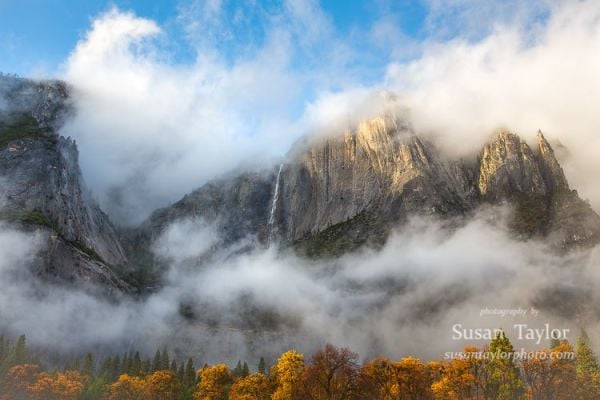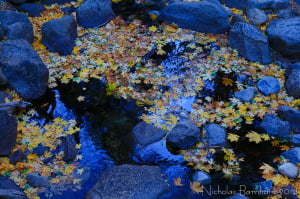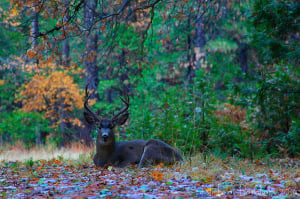Bishop Creek Right On Schedule

Parcher’s Resort (9/12/15) Jared Smith
Overall Conditions Above 8500ft Elevation
Patchy (10% – 50%)
Bishop Creek color spotter Jared Smith of the Parcher’s Resort reports there is “a LOT of color showing on the canyon walls, especially from Mt. Glen Campground on up to the end of the road (which is currently below South Lake due to some construction there). Especially colorful are the higher aspen above Willow Camp, Surveyor’s Meadow, the Tyee Lakes Trailhead and Parchers Resort.”
Most importantly, he states, “There is enough color already to make the trip worth it, but things should get even better over the next couple weeks, if the weather cooperates.”
Cooler weather is predicted to arrive this week, which Jared says, “could really get the color going. So, we’re looking forward some stunning views by next weekend.”
As reported yesterday, smoke from several wildfires across California are affecting areas with developing fall color. In the Eastern Sierra, the Rough Fire was dirtying the air, though, Jared reports, this “was much less of an issue this week due to a change in the wind direction.” Nevertheless, afternoon haze still diminishes fall color viewing. This is one autumn that could use some rain. Here’s Jared’s report:
Overall Conditions Between 7500ft & 8500ft Elevation
Just Starting (0% – 10%)
Noticeable lightening of the aspens is occurring in many of the lower reaches of the canyon, but very little color is showing.

Weir Pond (9/12/15) Jared Smith
Patchy (10 – 50%) – Weir Pond (9650ft)
We were expecting to have walk-in-only access to Weir Pond during the construction at the South Lake parking lot but as of now, they’ve left it open for day use which is great news. Unfortunately a bunch of inconsiderate backpackers continue to park in what is clearly marked “day use only”. Hopefully we’ll see the tow truck up here often over the coming weeks to keep that lot available for photographers over the next couple weeks as the peak of fall color approaches

Sabrina Campground (9/12/15) Jared Smith
Patchy (10 – 50%) – Sabrina Campground (9000ft)
The aspen along the road adjacent to the campground are already starting to pop off big time. Along the stream and within the campground however there is far less color. This spot is worth visiting now, but will get better.

Parcher’s Resort (9/12/15) Jared Smith
Patchy (10 – 50%) – Parchers Resort (9260ft)
Brilliant yellows are developing on the canyon walls all around the resort, and even a few of the aspen on the resort grounds are beginning to turn.

Willow Campground (9/12/15) Jared Smith
Patchy (10 – 50%) – Willow Campground (9000ft)
The canyon wall above the campground has quite a bit of yellow mixed in with bright lime green hues. The lower lying aspen along the stream and within the campground are mostly green still but the change from deep dark green to a lighter lime green has been obvious over the last week. The campground itself is closed for the season, but folks are welcome to walk into the camp to enjoy the color.

Table Mountain Camp (9/12/15) Jared Smith
Patchy (10 – 50%) – Table Mountain Camp (8900ft)
Some color is showing above the campground and a few aspen along the stream have started to turn but we’ve still got a ways to go.

Surveyor’s Meadow (9/12/15) Jared Smith
Patchy (10 – 50%) – Surveyors Meadow (8975ft)
This area is probably the furthest along and is nearing the 50% mark. There is still plenty of color yet to change around the meadow but this location has enough color to warrant a trip now. One of the smaller groves was really ahead of the game and is already losing some leaves – thankfully we’re only observing that in that one grove – everything else looks to be progressing normally.
Patchy (10 – 50%) – Lake Sabrina (9150ft)
No pictures of Sabrina this week but there is patchy color occurring both at and below the lake.
Patchy (10 – 50%) – North Lake (9255ft)
Quite a bit of color showing at North Lake but the best is yet to come.
Patchy (10 – 50%) – Stiny Loop above Mt. Glen Camp (8600ft)
Quite a bit of yellow showing along the stream and on the eastern wall of the canyon. These are smaller scrub aspen but very pretty nonetheless.

Mist Falls and the Groves (9/12/15) Jared Smith
Just Starting (0 – 10%) – Mist Falls and the groves above Bishop Creek Lodge (8350ft)
Mostly dark green holding on here, but this is no surprise as this location is one that usually pops later in the fall.
Just Starting (0 – 10%) – Aspendell (8400ft)
Very few signs of color here right now.

Groves above Cardinal Village (9/12/15) Jared Smith

Groves above Cardinal Village (9/12/15) Jared Smith
Patchy (10 – 50%) – Groves above Cardinal Village (8550ft)
Jared wrote he was “really close to going higher with my rating here as there is a ton of yellow blanketing the canyon wall from Cardinal Pinnacle towards the old Cardinal Mine. However, the aspen around Cardinal Village Resort are still green as green can be – but I’d guess that we’ll have almost peak conditions here next week.
Just Starting (0 – 10%) – Four Jeffries (8000ft)
Nothing but a few yellow branches showing right now.
Patchy – (10 – 50%) – Intake II (8000ft)
The aspen surrounding the lake are still hosting their summer shade of green although the scrub aspen growing up the mountainside are showing some yellow.
Just Starting – (0 – 10%) – Big Trees Campground (7800ft)
Nothing but green here right now.

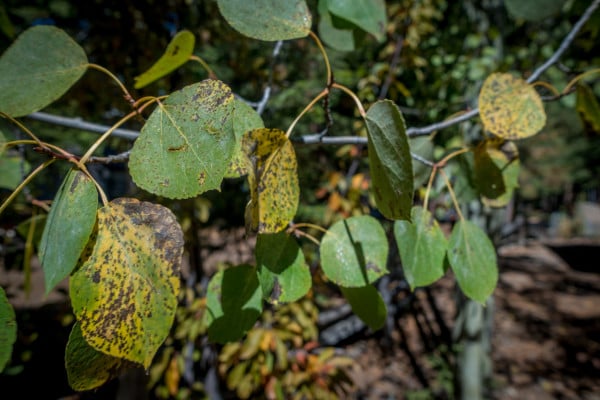


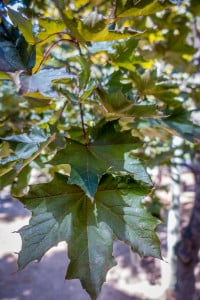
 September
September
